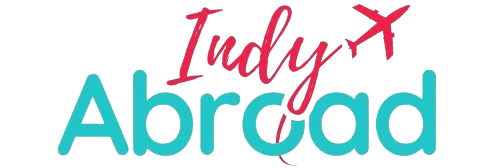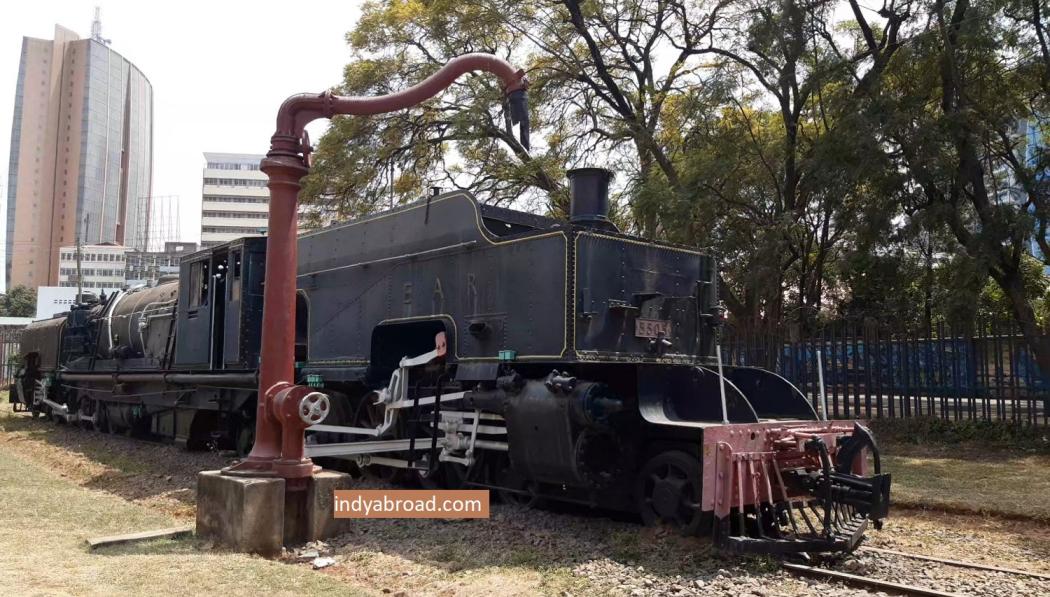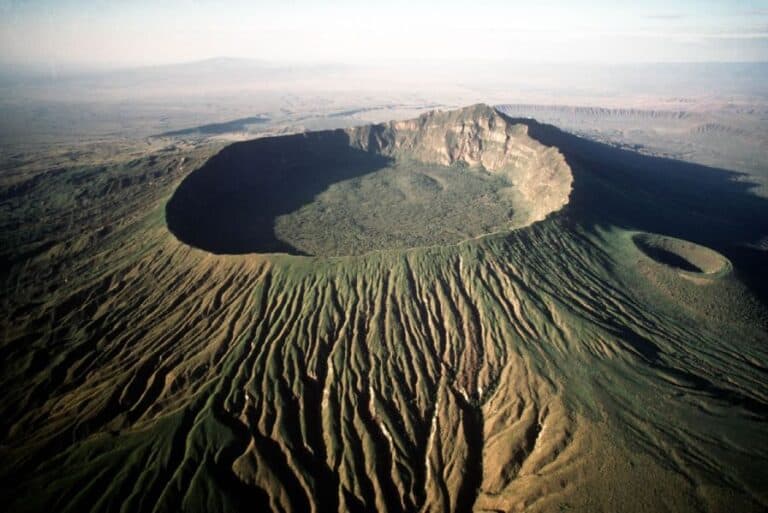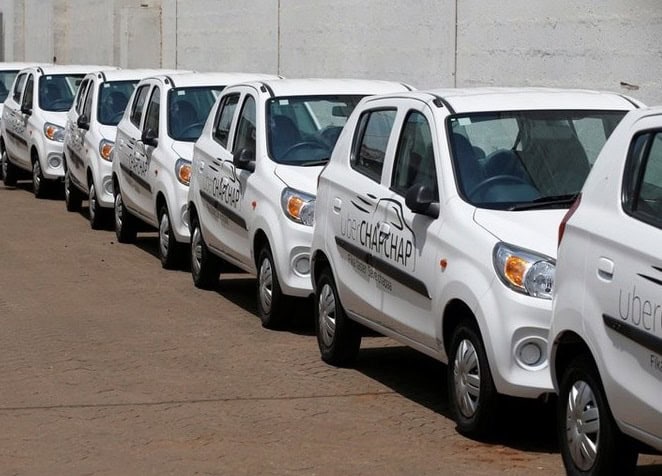Nairobi railway museum (Ultimate Guide)
If you love trains, especially vintage ones then you will love the Nairobi Railway Museum. Located along Station Road a few meters down from the Central Railway Station in Nairobi. It is a short walk about 20 minutes from the railway station.
Opened in 1971 and is now operated and maintained by the Kenya Railways. The Museum not only preserves the history of the trains and the evolution of railway transport in Kenya but also tells a story of how the railway shaped the country. (Read more here)
One notable train resting in the museum is Train 301, the train used in filming Out of Africa. An award-winning film featuring the life of Karen Blixen here in Kenya in the 20th century.
As the only railway museum in East and Central Africa, it has a lot of history on rail transport across East Africa. You also have the chance to spot old steam and diesel trains.
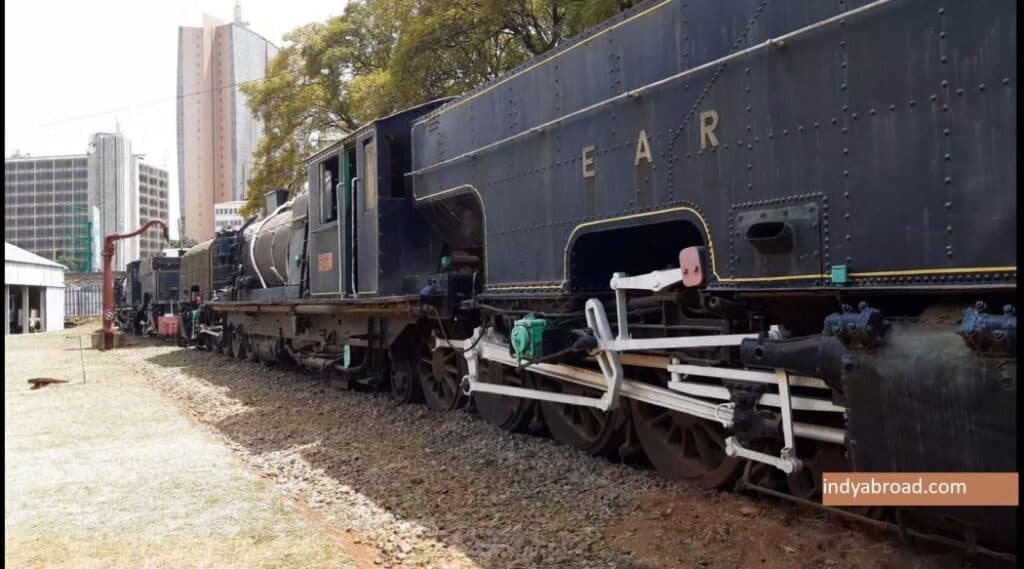
Nairobi Railway Museum Location
Nairobi Railway Museum is located along Station Road, behind the Technical University of Kenya, and directly opposite Neno Evangelism Center.
If you are coming from the central railway station, walk down the station road and it will take you to the museum entrance. The walk is about 20 minutes or less depending on your speed.
When coming from the city center, you can walk along Haile Selassie Avenue then turn left at the Shell Petrol station and make your way to the Museum. Another way to get there is by taking a taxi.
If you are at KICC walk down Tumbo Avenue to the footbridge, cross over to the opposite side then walk down Haile Selassie Avenue to the Shell station and turn left.
Here is a map to guide you
Entrance Fee and Opening Hours
The Railway Museum in Nairobi is open daily from 8 am to 5 pm including public holidays.
The entrance fee is as shown below:
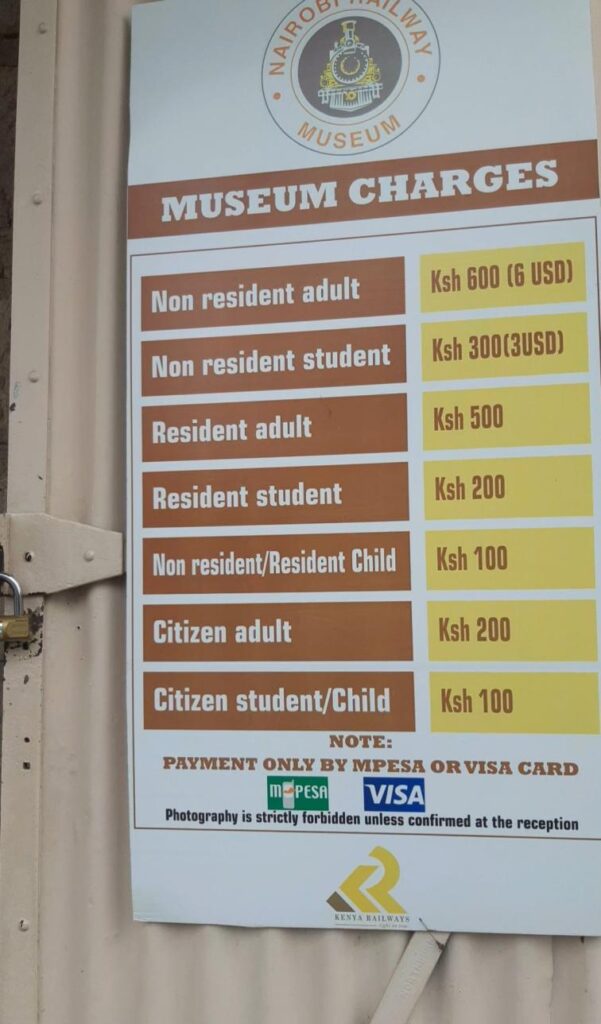
What to Expect Inside
From the gate, you’ll walk to the guards station a small wooden shelter where you register and get your “ticket”. If visiting as a group only one person registers their name and also gets one ticket for the group.
After that, you proceed to the museum’s reception where the payment is done. No cash payments are accepted you either pay via Mpesa or Visa card.
If going for a professional photo or video shoot, payments are also made at the reception. Depending on your setup you may need to make prior arrangements. During the week it’s not as crowded as it is on holidays and weekends.
Exploring the Museum
Room 1
Once you’ve made your payments, you can begin diving deep into the history of the railway. In the first room, you’ll find pictures taken during the railway construction. Pictures of notable people involved in the construction and old photos of Nairobi in the late 1800s and early 1900s.
Low-wage laborers brought in from India by the British colonialists in Kenya played a huge role in the construction of the Kenyan railway. Many pictures are also available in the museum.
Here you’ll also find the utensils, and furniture used by the Queen Elizabeth of England in the 1950s.
Other artifacts include the engine seat that would be attached at the front of trains and two or three passengers would then take their ride from this position. This seems like a lot of fun since you get the nice views but was also risky.
Another interesting artifact in this room is the Wheeled Trolley which was the mode of transport in Old Town Mombasa from the 1890s to 1926. This is basically a wooden seat/carriage with steel wheels that would move along the tracks across town.
The Permanent Way Inspector’s Bicycle is also interesting. Introduced in the 1950s to save time when inspecting the railway.
Here you’ll also find various train models, train parts, and much more. This is a history and train lover haven.
Room 2
In the next room also known as the communication room, you’ll find communication gadgets used in railway operations and communication.
These include old typewriters, bells, phones, signaling torches, clocks, and ticketing platform booths.
Room 3
This room is dedicated to water transport and some ships that had a significant impact on Kenyan history.
Here you’ll find various ship models and furniture from the sunken German cruiser Konigsberg.
Room 4
The last room in the museum is dedicated to modern rail transport in Kenya. In collaboration with the Chinese government, a new railway network was constructed connecting Mombasa to Nairobi, and Suswa among many other towns.
While the old railway was known as the lunatic express, this newly built rail is known as the SGR(Standard Gauge Railway).
You’ll find models of the new train and a detailed history of the rail construction including the significance and hidden meanings of each train station.
Nairobi Railway Museum Yard
The main attraction for most visitors is where you’ll find the vintage trains. You’ll spot the train models inside the museum in their full majestic form.
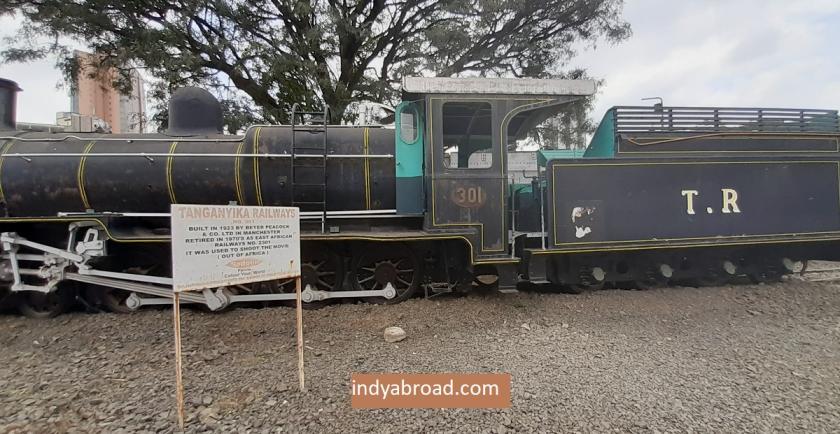
Walking into the yard, the first train you spot is train 301. The train used in filming Out of Africa in 1984. A film featuring Karen Blixen’s life in Kenya and loosely based on her autobiography book by Isak Dinesen(Karen’s pseudonym).
Take your time as you explore the yard and admire the vintage trains. There are about 10 trains including steam and diesel trains.
How much is the photo shoot at the Nairobi Railway Museum?
Group Photoshoot costs KES 10,000 while an individual Photoshoot costs KES 1,000.
How long does it take to go around the Railway museum?
Going around the railway museum yard can take 20 -45 minutes. If you love trains and want to fully take in every single detail on each vintage train it may take up to an hour.
It will take you about 45 minutes to 1 hour to explore the historical part of the museum or longer if you choose to read everything.
Don’t skip the history part which is exploring inside the museum before vising the yard outside. It gives you a basic knowledge of the trains and a glimpse into Kenyan history.
Parting Words
If you have a few hours to spare while in Nairobi, I would highly recommend visiting the railway museum. It’s a place for everyone not only train lovers or students. Kenyan rail transport may be evolving slowly but has come a long way.
It was also fascinating to see what the city looked like over 70 years ago and compare it to what it is today.
